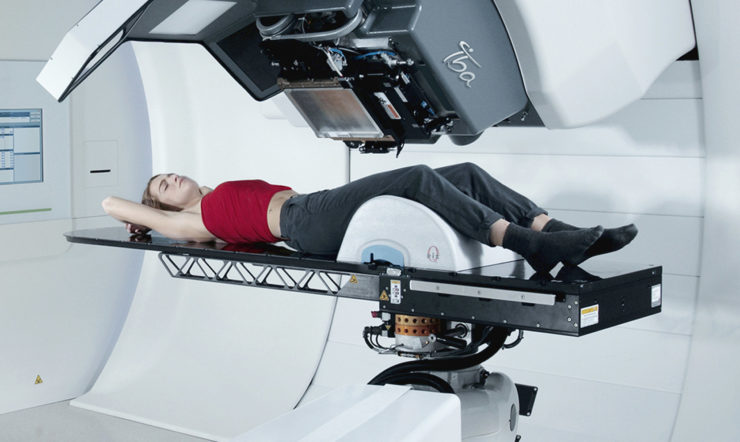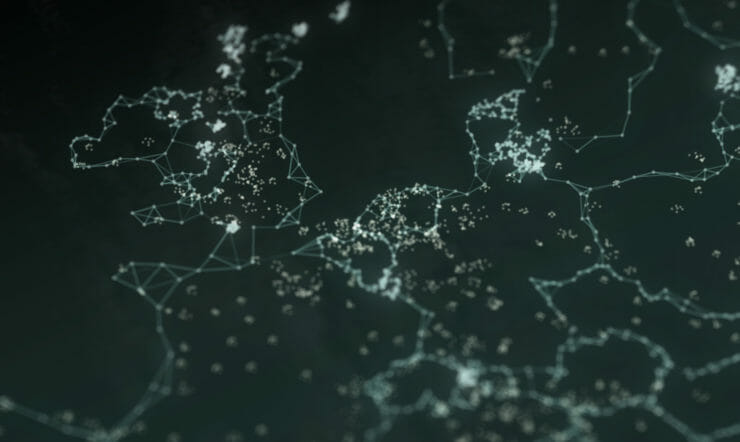“Our customers need snow at the right time, every year. Without snow, there’s no skiing. And without skiing, our customers no longer have a business.”
Markus Pfeifer, Head of Process Engineering at TechnoAlpin is explaining the knife-edge precision that his company’s customers require to make their businesses flourish. Snow manufacturers like TechnoAlpin provide a vital service to ski resorts across the world, helping them produce the snow they need to keep their slopes operational when they need.
“Skiers want to hit the slopes at Christmas. That is the key moment,” says Pfeifer. “So for a ski resort, all your slopes need to be ready and in perfect condition at that time. The challenge comes with the weather.
“You always have some cold temperatures leading up to the Christmas period,” he continues. “But it could be weeks of cold weather, or just a few days. It varies from year to year, but the demand from skiers stays the same. That means that the snow making process at the resorts has to be as efficient as possible in the days leading up to Christmas.”
Data has always been key to ensuring that efficiency. And recently, TechnoAlpin has been using the power of the Azure cloud – and Azure Synapse Analytics, in particular – to provide even greater insight for its customers into the snow manufacture process.
It is contributing to new service offerings from the company, more efficient snow production at its customers’ snow plants – and more skiers on slopes the world over.
A technology-first approach to snow manufacture
Snow manufacture is a relatively young industry. The first snow guns were created as a result of low-snowfall over winters in the mid-1980s. And when Italian company TechnoAlpin was founded in 1990, it was as a direct result of the success and appeal of newly introduced snow gun technology.
Since then, the company has grown it’s offering. It now provides customers with not just snow guns, but also the snow manufacture plants that power those guns. It has led to the company expanding from just a few people in Bolzano, Italy to employing around 750 people at 16 locations in 13 countries across the world – an operation large enough to command a majority share of the global industry.
It is an industry that has been dominated by innovations in technology since the start. And it is a trend that continues. “Our only chance to survive in this small market is to always be a technology leader in everything we do,” says Pfeifer. “That is what we have always aimed to be, it is what we have had to be. And it is what we have become.”
A key aspect of securing that position in the recent past has focused on the management of data to provide valuable insights to the company’s customers. That has meant modernizing the infrastructure the company uses to manage its data.
“10 years ago, if I wanted to analyze how specific ski areas were working with the snow quality, I had to call the people at those sites individually,” recalls Pfeifer. “They would export the data in an Excel table and send it to me to export. It was a huge amount of work.”
Seeing this as a defining challenge for the next era of the company, TechnoAlpin has invested heavily in cloud technology, moving their data to the cloud in 2018 and architecting the entire infrastructure in Microsoft Azure, with the support of Microsoft partner Porini.
It was a move that would shape the future of the company.
Using Azure Synapse Analytics to unify different data sources
“I was the first data analyst at TechnoAlpin,” says Thomas Tschager, who joined the company at the time of the Azure migration and now oversees its small Data Analytics team. “I enjoy a lot of freedom in this role because data analytics is like a new field for the company.”
As Tschager helped to design TechnoAlpin’s data systems and the services that were being developed as a result of them, he noticed some shortcomings with system they had put in place.
“The move to an infrastructure on Azure was a big advantage compared to what we had before,” he says. “But it was based on a data warehouse, which meant that integrating new sources of data took quite a lot of work, and it was only possible to update data once a day. So if you wanted to integrate a new source of weather forecast, for example, or a new type of machine, then this was difficult, costly and took a lot of time.
“We saw that this infrastructure was not enough to really keep us ahead of the other companies in the industry. To really give us a competitive edge and start being able to do innovative work, we had to be able to integrate new data sources faster, and to get much more out of the combination of data sources.”
The team at TechnoAlpin knew that establishing a data lake was the key to integrating data sources faster and unlocking the potential of real-time data insights. What was needed was a solution that would allow them to go from a data warehouse approach to a data lake approach.
“That’s where Azure Synapse Analytics has been the key for us,” says Tschager. “It combines data warehouse and data lake approaches in one product and has made the transition much easier. Because if you want to change a complete infrastructure from one architecture to another, you need a product that can combine both of them.
“But it’s not just the product,” he continues. “It’s also the expertise of the Microsoft FastTrack for Azure Team, who have helped us throughout, giving us all these good tips. That was really key to making such a successful product at the end.”
Achieving real-time insights with Azure Synapse Analytics
The new infrastructure has proved a great success for TechnoAlpin, particularly in identifying threats to their clients’ snow production processes at critical times.
“With this new data lake, we get new data every 15 minutes instead of once a day,” says Tschager. “That opens a lot of opportunities for real-time intervention. If we have a problem, now our service department is able to react after 15 minutes, and not a day later.
“And that is critical. Because in that phase in November and December, a day is always too late.
“Now, we can see issues arising even faster than our clients on-site. Being able to access new data every 15 minutes gives our service department the opportunity to help our clients to really improve the efficiency of their snow production.”
For TechnoAlpin, data insights open up the possibility to access new revenue streams too. “Our internal departments can provide better products, better service, and better consultancy.
“We are trying to make our whole sales process more data-driven, showing customers what they could achieve by buying a new snow gun, or a pump, or improving the pipes, or other components in their snow plant.”
An 18% Increase in snow production
Technical snowmaking is a complex process. The systems that underpin it have often been grown over many years, consisting of countless intricate components.
“There is almost always room for improvement of these systems,” says Tschager. “By analyzing historical data, it is possible to get an overview of the potential for optimization of the system.”
Having that view on its customers’ data, gives TechnoAlpin the opportunity to extend the scope of the consultancy services they offer their customers. “It is crucial to have this insight into the specifics of each of our customers,” Tschager says. “Because in order to realize the full potential of expensive investments into things like pumps and cooling towers, we need to tailor these technologies to each other and implement them in the right sequence.
“Let me give you an example of one of our long-standing customers, Arosa in Switzerland,” he continues. “Our data-driven approach to consultancy enabled us to develop an expansion plan for them that would increase their snow production by 18% under exactly the same environmental conditions – all because of optimized water cooling.”
“That’s right,” confirms Walter Tschanz, Head of Snowmaking, Slopes and Rescue Service at Arosa.
“Through data analysis, we were able to determine our weaknesses in pump performance and water supply.
“We now know exactly what we need to consider for further expansion: we need more pump capacity so that we can shorten the snowmaking time and have all the snow-covered slopes ready before Christmas. That means shorter snowmaking times, lower costs and our slopes opening faster.”

A data-driven future full of new business opportunities
It is clear that the journey to a data-driven future – one that will continue to give TechnoAlpin the edge over its competitors – is only just beginning. The infrastructure the company now has in place is the perfect foundation from which to start introducing innovations that will lead to new business opportunities.
“Maintenance is an area we want to focus on,” says Tschager. “Currently, we visit our customers’ snow plants at the same time every year to conduct maintenance. But we are starting to use Azure IoT Hub to get data directly from those plants. We want to be able to use this information to make maintenance of those plants more efficient and only when necessary.
“Another thing we are working on is to predict failures, which are really harmful in that phase between November and December before the ski resorts open,” he adds. “If something breaks in that period, you don’t have enough time to fix it. But we think that using our data, we can do much more to predict these failures going forward.”
For Pfeifer, he hopes that data will be used to empower those that work on the slopes seasonally. “Data is going to get more and more important,” he says. “So going forward I want us to use that data to provide our customers with more specific suggestions on how they can make snow production faster and more efficient.
“With the technology we have now and the insights we can get at the click of a button, we are on the road to achieving that.”































